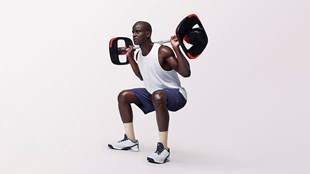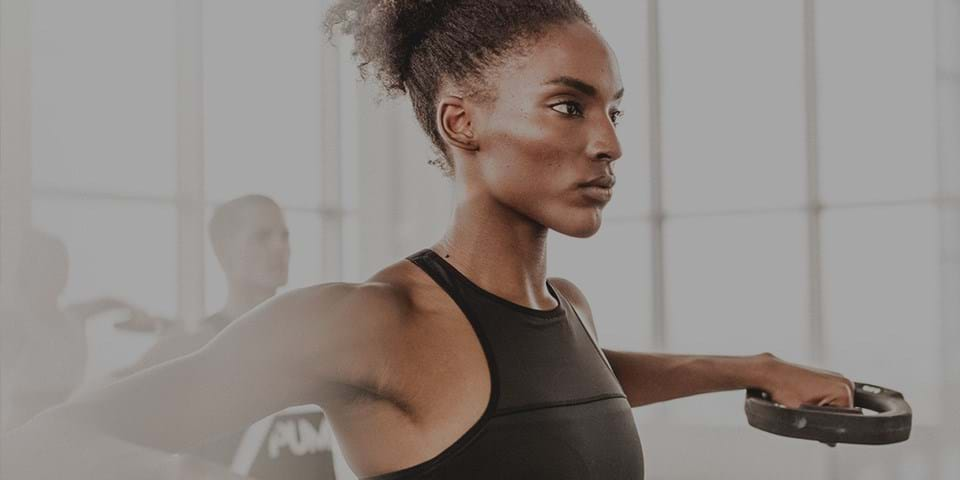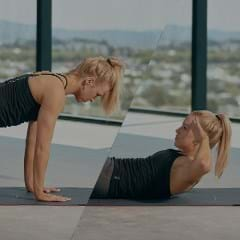“A partial squat is not a proper squat.” “Ass to grass is the only way.” “Anything less is just ego-lifting horseshit.”
Those are just a few of the repeatable responses to posts about the safest way to squat – there are worse! Clearly, plenty of gym buffs believe a partial range squat does diddly squat. So, are they right?
Any exercise professional worth their weight in dumbbells will agree that the squat is fundamental to any solid exercise routine. But there’s a fair amount of debate around the best way to do them. Here we delve into the intricacies of squat mechanics and reveal the safest way to get the maximum benefit from this crucial move.
"On the outside, it seems like a pretty simple functional movement, but it's actually surprisingly complex.”
Engaging all the major muscle groups, the squat lifts overall fitness and helps maximize fat burn while building strength in the lower body and core. "On the outside, it seems like a pretty simple functional movement, but it's actually surprisingly complex," says Bryce Hastings, Les Mills Head of Research. That complexity, he explains, lies in the squat requiring simultaneous movement of the hip, knee and ankle, with the trunk locked into position – which for most of the population can be a challenge.
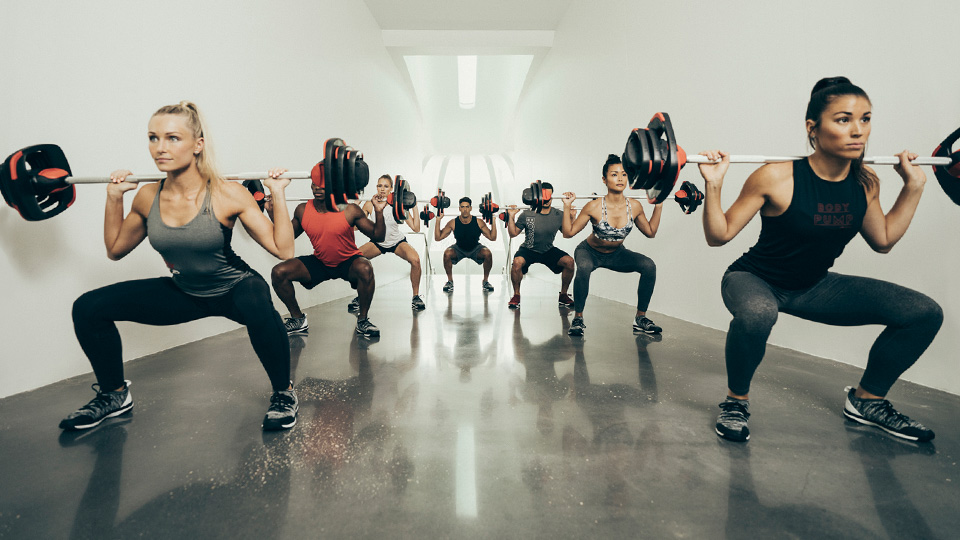
“The most common movement fault we see with squatting is that people lose their trunk positioning,” says Hastings. “This means they can’t isolate the movement into the hip and lower limb, and they buckle from the trunk.“
When this happens, it's the lower back that's most at risk, because even if you squat with perfect form there's a lot of compression on your lumbar spine. If you lose control of your trunk position, you no longer maintain a neutral spine and the pressure on your lumbar spine becomes uneven. This squeezes the front of the vertebrae together, driving the disk material backward. It puts the posterior disk at risk – a really common source of injury, with 80 percent of people suffering from lower back pain at some point in their lives.
“The lower the squat, the more challenging it is to maintain core control, which means the lower you go the more likely it is that trunk positioning will be compromised.”
So how can you squat safely?
Mastering solid squat technique is the key to maximizing the benefit and avoiding injury. The primary aim is to maintain control of your core. When you're squatting you should always focus on lifting your chest and bracing your abdominals and keeping these two areas engaged throughout the range of motion.
The lower the squat, the more challenging it is to maintain core control, which means the lower you go the more likely it is that trunk positioning will be compromised. “To minimize any risk we encourage people to stop at 90 degrees at the hip and knee,” says Hastings.
It would be reasonable to assume that what some may consider a partial squat might result in only partial benefit, but that’s certainly not the case.
Not only does partial range squat minimize the risk of injury, but research has also highlighted that when people get fatigued, partial range squats enable them to keep going for longer – and therefore achieve greater strength gains. Put simply, there’s no evidence that doing partial range squats is detrimental. In fact, there’s some evidence to suggest partial squats can enhance your training.
Should you ever do full squats?
Many believe that a full range squat provides more activation of certain muscle fibers and some studies indicate that full squats can drive improved capacity in areas such as vertical jump. However, where this move falls down is that not everyone can do it safely. “Because of the increased demand a full squat puts on the trunk, only a small proportion of exercisers are likely to be able to execute the full squat safely and effectively,” explains Hastings.
Even if you have a perfect squat, if you are doing a squat with weights and have a lot of load on the barbell, that’s a lot of compression – and there’s a very real risk that you’ll reach the point of no return and you won’t be able to make it through a rep. Remember – when you’re squatting you are targeting your leg muscles. Yet most people give up on a set because of back tension – not because their legs blew out. “I have seen a lot of people with perfect squat technique who have blown discs and had to stop squatting,” adds Hastings, who is also a physiotherapist.
With this in mind, the best time for full squats is when you’re training with a personal trainer or training partner. Someone else standing over you can monitor your back position and determine when you actually start to become at risk.
“As you go past 90 degrees, the glutes and hamstrings perform more work, which can help improve the strength ratio between hamstrings and quads.”
Leading personal trainer Corey Baird certainly endorses the full squat, saying one of the biggest differences between doing partial squat and full squat is the increased work from the glutes and hamstrings. “As you go past 90 degrees the glutes and hamstrings perform more work, which can help improve the strength ratio between hamstrings and quads.” However, Baird adds that the full squat is not for everyone, and many exercisers should initially start with the partial squat in order to learn the move correctly.
If you aim to master the full squat Baird suggests you work with a good trainer to get you there. "They will assess your squat movement pattern from the front, side and back view, analyzing everything from knee alignment to weight distribution, hip and ankle mobility and more. They will also take into account past injuries, flexibility, mobility, core strength and of course what you want to achieve from your squatting.”
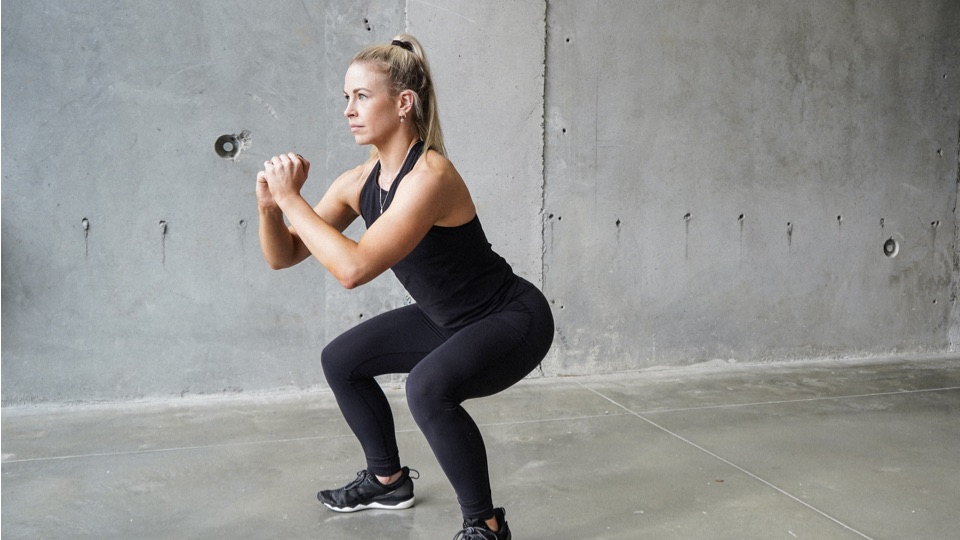
For the majority of those working out solo, at home, or in a group fitness situation, Hastings says partial squats are the best bet. "With a partial squat, you can minimize any risks associated with squatting, while still enjoying the benefits."
A combination of partial squats, light weights and high repetitions is proven to maximize results. Research shows that we burn maximum calories when we squat with lighter weights but at a faster speed. And, if you squat to the beat of music, as you do in a BODYPUMP workout, you are compelled to go faster for short bursts, which is key to increasing calorie burn.
You can experience the latest BODYPUMP workouts at a club near you or use LES MILLS™ On Demand.



